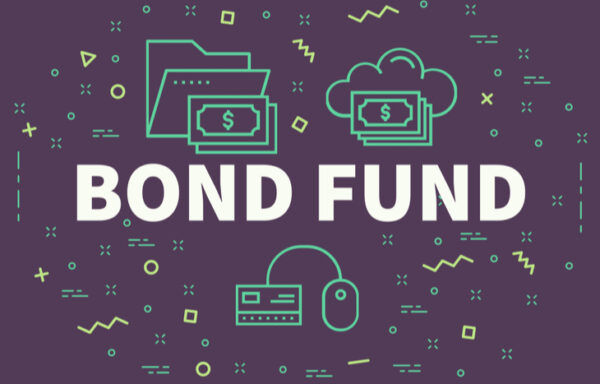Premium vs. Discount Bonds: What’s the Difference?
The bond market tends to be relatively stable compared to the stock market. Nevertheless, there is a degree of volatility associated with bonds—especially as they change hands between investors. As you delve deeper into the bond market, it’s important to understand the difference between premium vs. discount bonds. Identifying them means capitalizing on some of this sparse volatility.
Bonds aren’t issued at a premium or discount. Instead, all new bonds enter the market as standard bonds. Their value—and their status as “premium” or “discount”—are the result of market factors and investor sentiment. It’s possible for investors to capitalize on both premium and discount bonds, depending on their investment strategy.

What is a Premium Bond?
A premium bond trades above its face value. For example, a $500 bond that trades for $525 is a premium bond. This happens when the bond’s coupon rate exceeds the prevailing interest rate. So, for example, the prevailing interest rate might be 4%, while the bond’s coupon rate is 6%. This superior coupon rate is why the bond trades at a premium in secondary markets.
Trading bonds at a premium actually drives the yield of the bond down. So why do investors seek out premium bonds? Because they pay back cash at a faster rate of return. Investors can take the higher yield interest payments and invest them elsewhere. This is especially helpful in a rising rate environment. There’s also the prospect of a better cushion between prevailing rate and the coupon rate, which reduces sensitivity to interest rate changes.
What is a Discount Bond?
Discount bonds trade below face value. For example, a $500 bond that trades at $480 is a discount bond, for all intents and purposes. This occurs when the coupon rate of the bond falls below the prevailing interest rate. In this case, if the prevailing interest rate is 6% and the coupon rate is 4%, it’s more likely to trade at a discount.
Rising interest rates aren’t the only factors that may cause the bond to trade at a discount. If the bond issuer faces a risk of default, investor sentiment may sour, causing the bond to sell at a discount. The same can happen due to a credit rating review that signals higher risk. Many investors are quick to offload bonds as they become riskier, due to the fact that bonds traditionally represent stability.
What Causes Bond Prices to Change?
Remember that companies issue standard bonds, and they’re not considered premium or discount until they reach a secondary market. So, what causes them to rise or fall above their face value? Investors look at two things: interest rate (coupon) and issue price. Then, they juxtapose these against the current market.
Rising interest rates lead to falling bond prices; the same is true of the inverse, as well. What makes bonds more or less attractive investors is the fact that they’re fixed-income instruments. The coupon price of a bond doesn’t change, which means its perceived value rises or falls based on the coupon rate’s relationship to the prevailing interest rate. As a result:
- Bonds become more attractive as interest rates fall, because coupon rates are usually high
- Bonds become less attractive as interest rates rise and offer better ROI than the coupon
This constant fluctuation of interest rate and demand for bonds is what forms the secondary market—and how premium vs. discount bonds are born. Some investors want the high-yield payments of the bond so they can reinvest them while interest rates are low. Others buy the bond at a discount to cash in on its face value. Because there are lucrative options on either side, the bond market continues to see robust activity regardless of sentiment.
Different Meanings Abroad
Investors need to be aware that terms like “premium” and “discount” have different meanings in foreign markets—especially “premium bonds.” In Canada and the United Kingdom, investors can actually buy premium bonds in primary markets.
- In Canada, the Bank of Canada issues premium bonds, which pay a higher interest rate than savings bonds. They also come backed by the full faith and credit of the Canadian government, making them extremely low-risk.
- In the United Kingdom, the National Savings and Investment Agency issues premium bonds as part of a lottery system. The bonds themselves pay tax-free interest into a pool, which investors are eligible for through the purchase of said bonds.
United States investors tend to have very little exposure to these types of bonds, which should assuage any confusion that comes with them. Nevertheless, investors with more globalized, diversified portfolios should be aware of the semantic differences.
A Note About Credit Ratings
Because credit agencies have a significant impact on the desirability of bonds, it’s important to make a note about ratings. Every bond carries a rating from one of the major credit agencies: namely Standard & Poor’s, Moody’s Investors Service or Fitch Ratings Inc. The higher the rating, the higher the bond is to trade at a premium; the lower the rating, the heavier the discount. Most AAA (Aaa) and AA (Aa) bonds trade at a premium regularly. Junk bonds, like those rated B or CCC (Caa) tend to trade at a discount out of principle.
Evaluate Bonds to Make Smart Investments
When it comes to buying premium vs. discount bonds, there is no wrong answer. Consider the strategy behind buying at a discount or buying at a premium, and seek to capitalize on either the annual yield or the face value of the bond. Just make sure you’re not buying a bond that’s overvalued for its coupon or discounted so low that it’s effectively junk.
For the latest bond investing tips and trends, sign up for the Wealthy Retirement e-letter below. Investing in bonds is a great way to prepare yourself for retirement!





